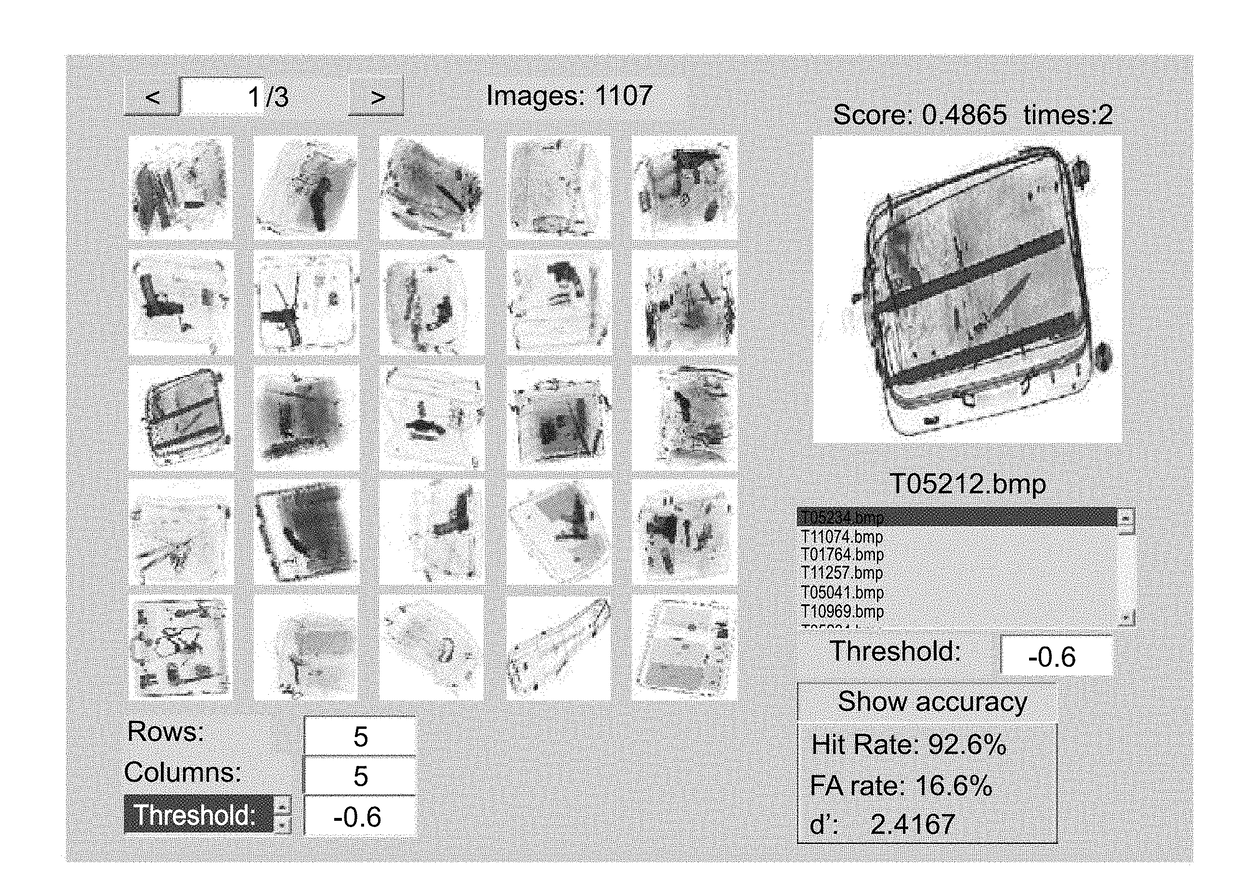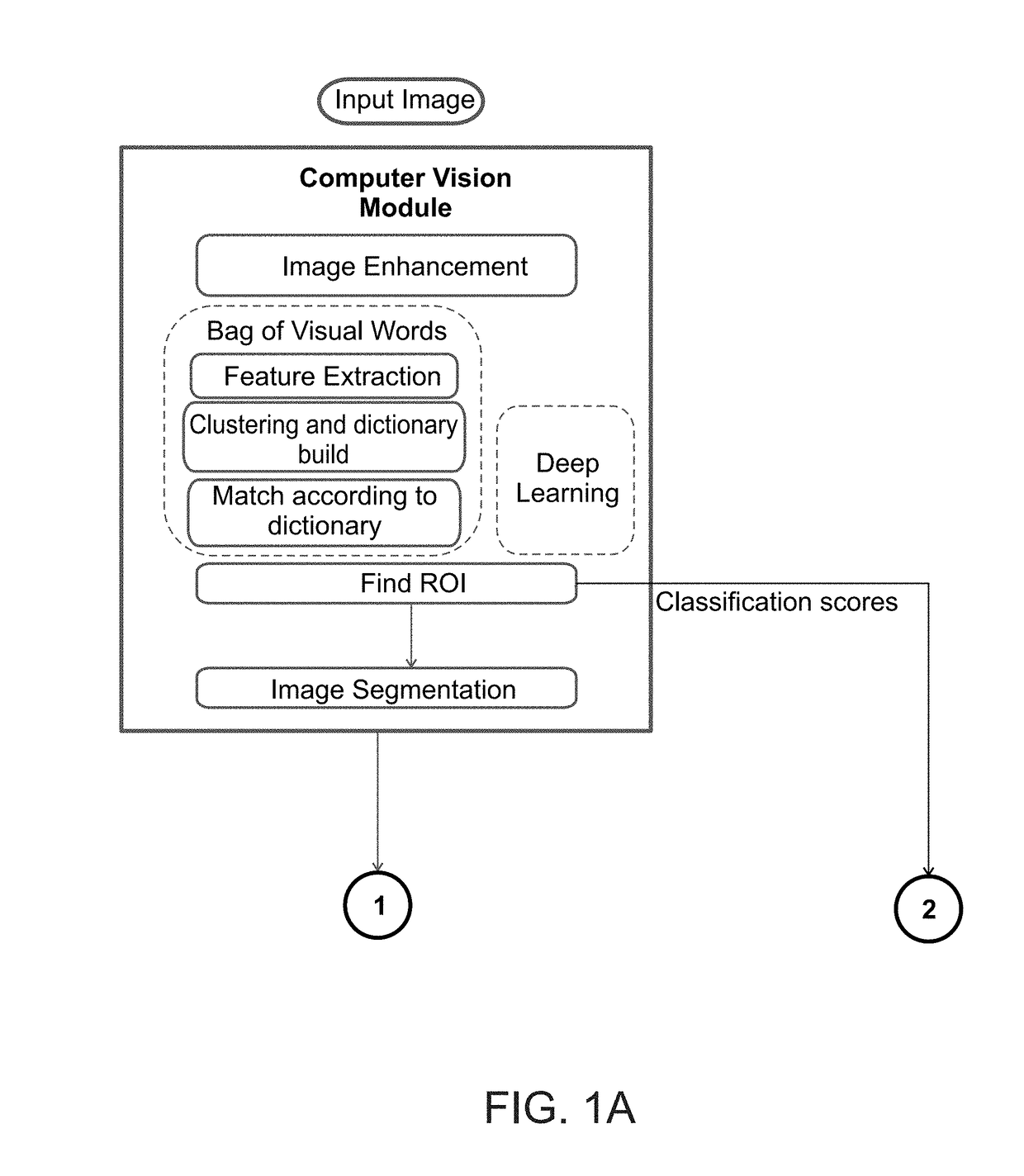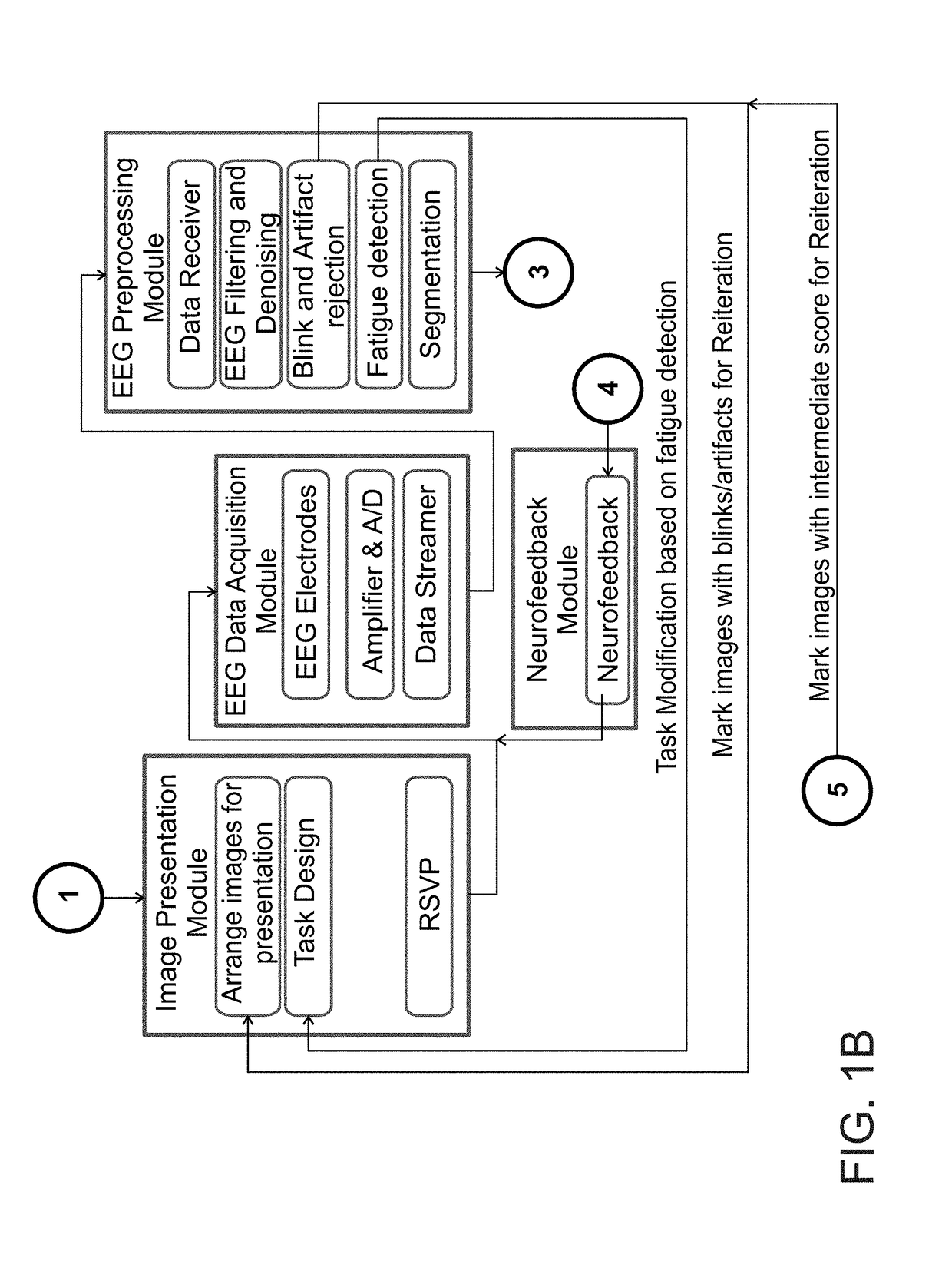Image classification by brain computer interface
a brain computer and image technology, applied in the field of brain computer interfaces, can solve the problems of heavy computational demands and less suitable for real-time applications
- Summary
- Abstract
- Description
- Claims
- Application Information
AI Technical Summary
Benefits of technology
Problems solved by technology
Method used
Image
Examples
example 1
Album
[0275]To classify a stack of individual images (e.g. X-ray images of baggage or medical images) the system of the present embodiments can arrange the images in an album (see representative screen shot in FIG. 7). Every image is given a score by the EEG classifier. The images are of the present embodiments sorted by their scores. In some embodiments of the present invention only images whose scores exceed a certain threshold Tare presented on the screen and classified as targets. The threshold T can be adjusted by the user in real time.
Example 2
Spatial “Heat Map”
[0276]For large images such as maps, satellite footage or aerial footage, it is beneficial to use the system of the present embodiments for generating a heat map (see representative screen shot in FIG. 8). In these embodiments the image is dissected to tiles with an overlap between adjacent tiles both in the x and y directions. The overlap is optionally and preferably such that a fraction p of the tile is shared with the...
example 2
X-Ray / CT Images
[0279]X-Ray / CT images of baggage or cargo, and medical X-Ray / CT images can be inspected using the system of the present embodiments. The prototype system described in Example 1 was successfully used to classify X-Ray images of airport checkpoint baggage to detect images containing threats (firearms and sharp objects). Following are the results of the experiment.
Brain Responses: ERP—Event Related Potentials and Spatial Distributions
[0280]FIG. 9A shows the average brain response (ERP) to targets and non-targets at one of the EEG electrodes (Pz). FIG. 9B presents the distribution of electrical potentials on the head 400-800 milliseconds after image presentation. Reddish colors indicate high energy which is useful for classification.
[0281]FIGS. 10A and 10B demonstrate the difference between brain responses to single images of Targets and Non-Targets measured at electrode Pz:
Scores Distribution
[0282]Every image was assigned with a classification score. FIG. 11 demonstrates...
example 3
[0290]The prototype system described in Example 1 was successfully tested to detect images of certain person face among other faces images.
[0291]Although the invention has been described in conjunction with specific embodiments thereof, it is evident that many alternatives, modifications and variations will be apparent to those skilled in the art. Accordingly, it is intended to embrace all such alternatives, modifications and variations that fall within the spirit and broad scope of the appended claims.
[0292]All publications, patents and patent applications mentioned in this specification are herein incorporated in their entirety by reference into the specification, to the same extent as if each individual publication, patent or patent application was specifically and individually indicated to be incorporated herein by reference. In addition, citation or identification of any reference in this application shall not be construed as an admission that such reference is av...
PUM
 Login to View More
Login to View More Abstract
Description
Claims
Application Information
 Login to View More
Login to View More - R&D
- Intellectual Property
- Life Sciences
- Materials
- Tech Scout
- Unparalleled Data Quality
- Higher Quality Content
- 60% Fewer Hallucinations
Browse by: Latest US Patents, China's latest patents, Technical Efficacy Thesaurus, Application Domain, Technology Topic, Popular Technical Reports.
© 2025 PatSnap. All rights reserved.Legal|Privacy policy|Modern Slavery Act Transparency Statement|Sitemap|About US| Contact US: help@patsnap.com



